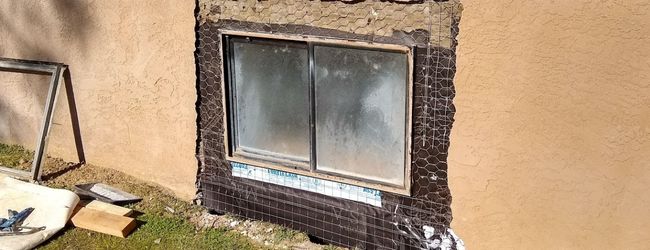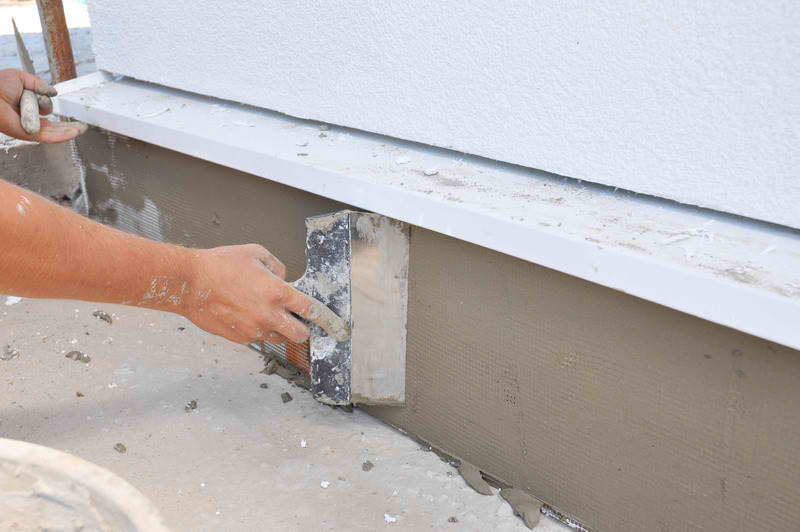The Advantages of Picking Stucco for Outside Finishes
Choosing stucco for outside finishes presents an engaging situation for home owners looking for a combination of sturdiness, aesthetic versatility, and power performance. Recognized for its capacity to sustain numerous climate conditions, stucco not only decreases lasting upkeep expenses but additionally boosts the aesthetic allure of any type of residential or commercial property with its range of shades and appearances.

Resilience and Long Life
Stucco, a combination of cement, lime, and sand, offers phenomenal sturdiness and long life for exterior surfaces. This material is specifically resistant to extreme climate conditions, consisting of hefty rain, solid winds, and severe temperatures. Its structure enables it to hold up against moisture seepage, consequently decreasing the risk of mold and mildew and mold, which can compromise the integrity of other exterior materials.
Stucco is known for its reduced upkeep needs, as it does not require regular repainting or securing, unlike timber or plastic siding. When effectively installed, stucco can last for a number of years, making it a cost-efficient choice over time. Furthermore, stucco's resistance to fracturing and fading ensures that the aesthetic charm of the exterior continues to be intact over time.
Another considerable advantage of stucco is its fire resistance, a critical consideration for many property owners. Unlike wood, stucco does not shed quickly, giving an included layer of security (stucco contractor). Generally, the durability and longevity of stucco make it a perfect option for those seeking a dependable and enduring outside coating that can hold up against the examination of time and environmental difficulties
Aesthetic Versatility


In addition, stucco can be conveniently tinted making use of integral pigments, offering a comprehensive scheme to select from. This flexibility in color enables customization, making it possible for structures to harmonize with their surroundings or stand apart as special spots. In addition, stucco can be combined with other materials, such as stone or wood, to create visually striking contrasts that enhance the overall appearance.
The product's capability to be formed right into different forms additionally adds to its aesthetic charm. Custom-made functions like arches, trim, and ornamental elements can be perfectly integrated into stucco designs, enriching the visual intricacy of a structure. On the whole, the visual adaptability of stucco not just improves the visual appeal of a residential property however likewise reflects the individual design and preferences of the property owner, making it an outstanding choice for outside coatings.
Energy Efficiency
Energy-efficient structure products are necessary for minimizing energy consumption and lowering energy expenses, and stucco stands apart in this regard. Its one-of-a-kind structure and application add to boosted thermal efficiency, enabling structures to preserve stable indoor temperatures throughout the year.
Stucco has a high thermal mass, implying it can save and absorb find more info warmth during the day and launch it gradually at night. This home helps alleviate severe temperature variations, reducing the reliance on home heating and cooling systems, therefore cultivating energy effectiveness. In addition, stucco can be applied over shielding materials, additionally boosting its energy-saving potential.
Additionally, the seamless nature of stucco lessens air seepage, which can lead to unwanted warmth loss or gain - stucco contractor. This impermeable barrier not just improves comfort levels however additionally decreases the workload on a/c systems, inevitably decreasing energy costs
Furthermore, stucco's reflective top qualities can minimize warm absorption, specifically in warmer environments, which assists in keeping cooler interior settings and lessens dependence on cooling. By choosing stucco for exterior homeowners, finishes and builders can make considerable strides towards energy efficiency, fostering both ecological sustainability and financial cost savings.
Low Upkeep Needs
What makes stucco an enticing option for homeowners looking for a low-maintenance exterior coating? The sturdiness and resilience of stucco are crucial elements that add to its low upkeep requirements.
Stucco is non-combustible and does not draw in pests, substantially reducing the probability of damage from termites or fire. Its outside surface area is likewise immune to mold and mold, specifically when applied with a high-quality surface. Homeowners can expect to execute only occasional cleansing with water and mild detergent to keep its look.
Additionally, stucco is much less susceptible to cracking than other materials, particularly when installed appropriately with appropriate expansion joints. Need to any type of repairs be required, they are economical and usually straightforward, negating the requirement for considerable renovations. In general, the mix of longevity, resistance to pests and dampness, and very little maintenance makes stucco a superb choice for those prioritizing a low-maintenance exterior finish.
Eco-Friendly Residences
Picking stucco not just straightens with home owners' needs for reduced upkeep yet likewise uses considerable eco-friendly residential properties. Made mostly from all-natural materials such as concrete, lime, and sand, stucco provides a lasting choice for outside coatings. Its manufacturing procedure takes in less power contrasted to artificial materials, contributing to a reduced carbon helpful site impact.
Additionally, stucco is very durable, which equates to a much longer lifespan and lowered need for regular substitutes. Stucco's thermal mass residential or commercial properties boost energy efficiency by controling interior temperatures, which can lead to minimized home heating and cooling expenses.
In addition, stucco can be used with low-VOC (volatile organic substances) paints and finishes, minimizing unsafe emissions connected with interior air top quality. Its flexibility more info here permits a series of appearances and finishes, making certain visual charm without compromising environmental stability - stucco contractor. By selecting stucco, home owners not only enhance their residential or commercial property's charm but also add positively to environmental sustainability
Final Thought
In summary, stucco provides a compelling choice for exterior finishes due to its toughness and durability, visual adaptability, power effectiveness, low maintenance requirements, and environmentally friendly residential properties. These attributes not just improve the aesthetic charm of homes however also add to set you back financial savings and ecological sustainability. As house owners seek eye-catching and durable building materials, stucco attracts attention as an optimum option, lining up with contemporary demands for both functionality and ecological duty in property style.
Choosing stucco for outside surfaces presents an engaging situation for homeowners looking for a combination of resilience, aesthetic flexibility, and power effectiveness. Overall, the visual flexibility of stucco not just improves the curb allure of a residential property but additionally shows the individual style and choices of the homeowner, making it a superb choice for outside finishes.
What makes stucco an enticing choice for home owners seeking a low-maintenance outside finish? Made mostly from all-natural materials such as lime, sand, and concrete, stucco provides a lasting choice for outside surfaces.In recap, stucco presents a compelling selection for exterior surfaces due to its durability and durability, visual versatility, energy performance, low upkeep demands, and environment-friendly homes.